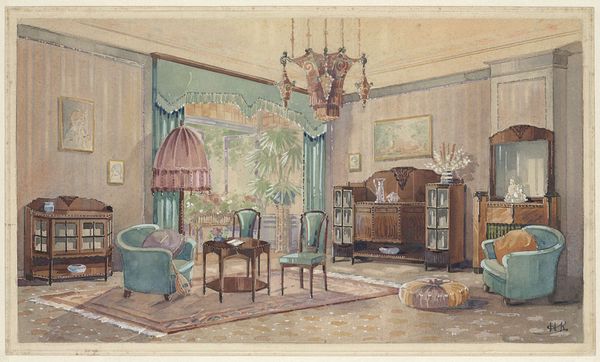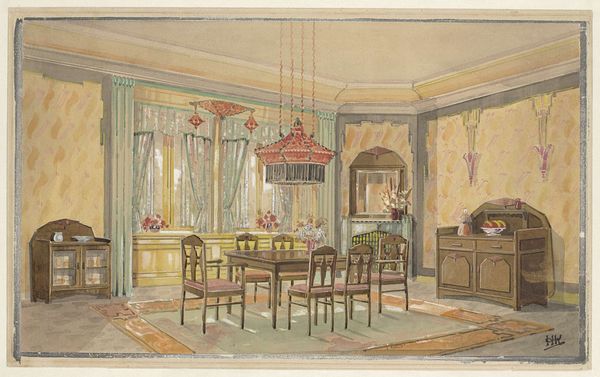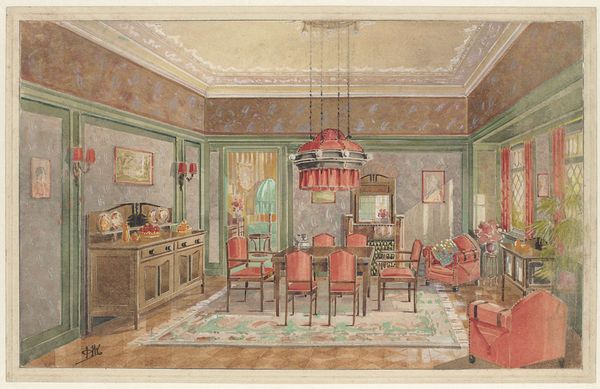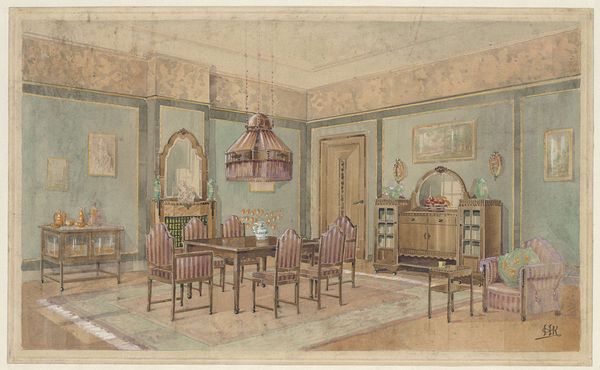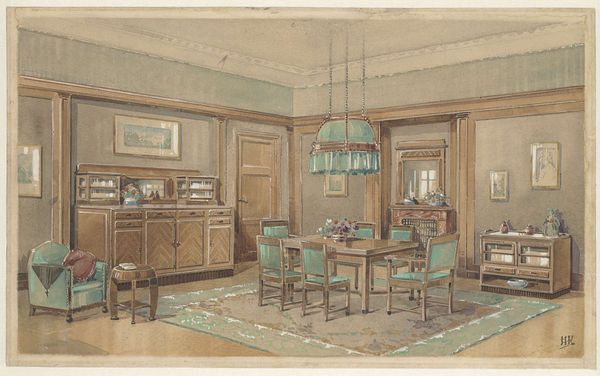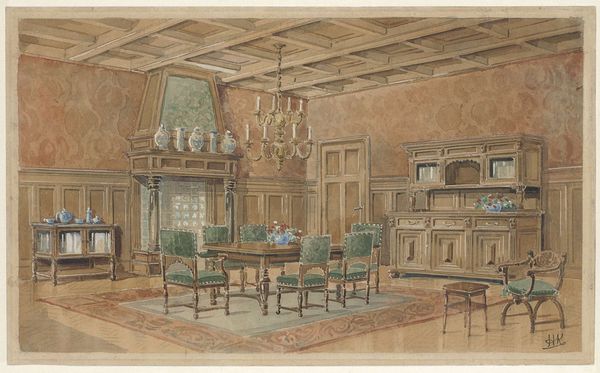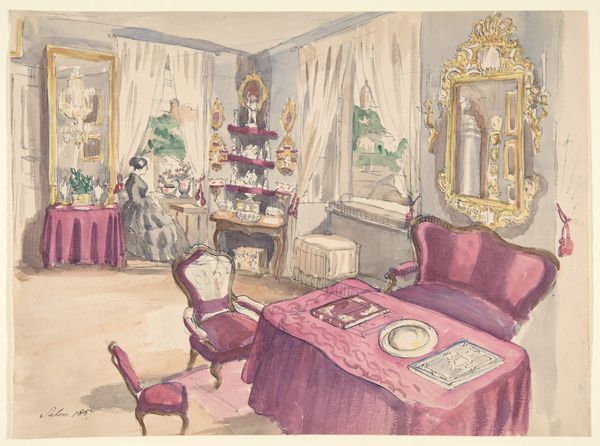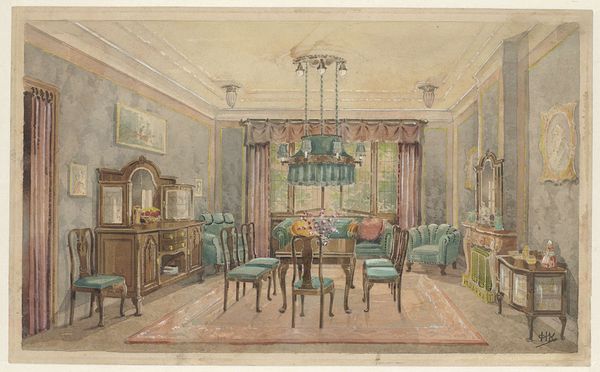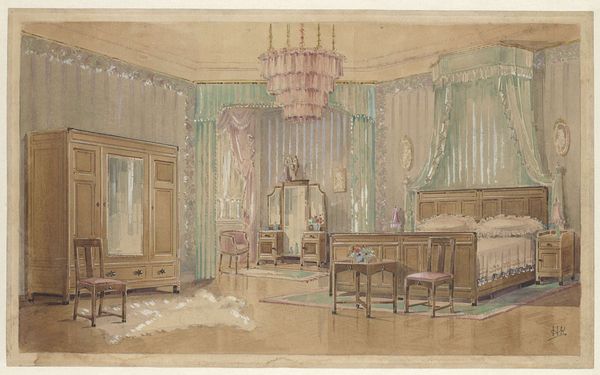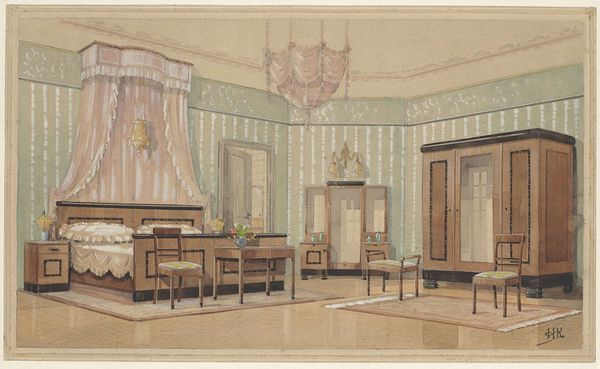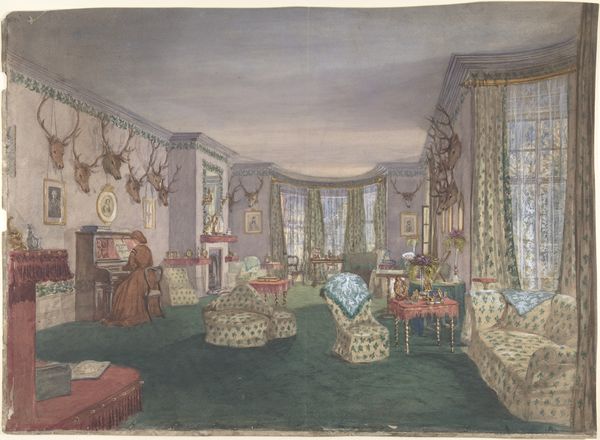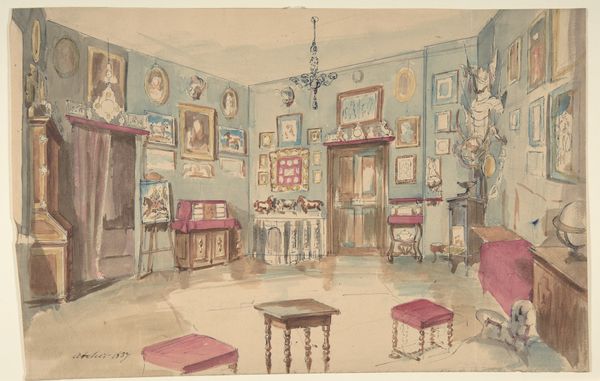
Dimensions: height 274 mm, width 438 mm
Copyright: Rijks Museum: Open Domain
Curator: This drawing, "Eetkamer met gematte stoelen," or "Dining Room with Matt Chairs," dates from around 1925, and is attributed to the hand of Monogrammist HK. It's currently held in the collection of the Rijksmuseum. The artwork utilizes ink on paper to illustrate a room interior. Editor: My first thought is that it’s an odd combination of grandeur and austerity. The high ceilings and elaborate molding suggest wealth, but the color palette and the relative bareness of the room feel almost melancholic. Curator: Absolutely, and considering the period—post-World War I—such contrasts resonate strongly. We see a burgeoning Art Nouveau style mingling with elements of Impressionism, but beyond aesthetics, the interior also symbolizes shifts in societal values. Who occupied this space, what social rituals were enacted, and how did gender roles influence the arrangement of such an intimate, domestic space? Editor: The chairs specifically strike me. “Matt chairs”—are they referencing the material? Are they handmade? You know, when you consider how much labor went into creating even what looks like a simple chair at that time. It speaks volumes about craft traditions versus mass production, and about the value placed on material objects versus human effort. Curator: Exactly! By examining the composition, including details such as the presumed status of the chairs, we can unravel complex power dynamics. And note how light is handled. Soft and diffused. Not quite concealing, not fully revealing—much like the identities operating within such elite spaces during interwar period. The chandelier feels more substantial than the sparse tableware on the side. This hints at specific desires and consumption habits that characterized a society undergoing major cultural realignments. Editor: It feels almost stage-set, right? All of these components work together to tell us how wealth shapes the material reality, and I can not ignore how this space then, functions as a backdrop to larger societal roles or hierarchies. It emphasizes an appreciation of both handcrafted elegance and, probably, exploitative systems to source the raw material and manpower. Curator: Indeed, an art historical exploration combined with materialist inquiries offers us such richer perspectives! It's through questioning that such images become less passive documents, but sources of understanding for historical inequities. Editor: Precisely. An evocative piece indeed; forcing us to think beyond just the visual surface and consider the hands and histories that constructed its reality.
Comments
No comments
Be the first to comment and join the conversation on the ultimate creative platform.
